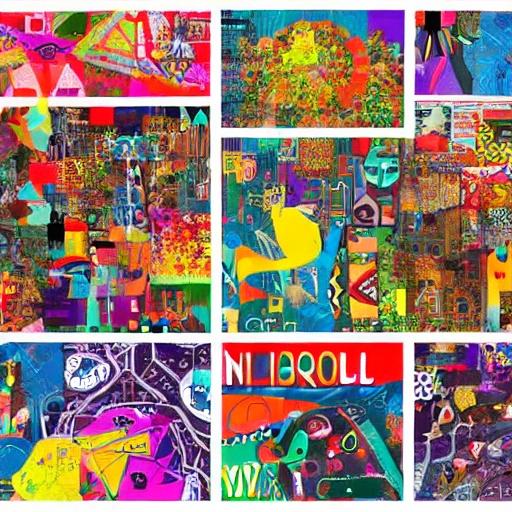Non-Fungible Tokens (NFTs) have swiftly emerged as an innovative digital asset, revolutionizing various industries beyond the realm of cryptocurrencies. Originally introduced as a concept in 2012, their adoption and rapid growth over the past decade have propelled them into the mainstream spotlight.
NFTs are unique digital tokens built on blockchain technology, enabling ownership and verification of individual digital assets, such as artwork, music, videos, and even virtual real estate. Their uniqueness and scarcity make them highly valuable, acting as a digital certificate of authenticity and ownership.
Although the concept of NFTs was initially met with skepticism and confusion, it gained momentum and recognition as prominent artists and musicians began to experiment with this revolutionary technology. In 2017, CryptoPunks, the first NFT project, gained attention for its collection of 10,000 unique 24×24 pixel art characters on the Ethereum blockchain. This opened the floodgates for further exploration of the potential uses and value of NFTs.
One significant factor that contributed to the adoption of NFTs was the emergence of online marketplaces dedicated to buying, selling, and trading these digital assets. Platforms like Rarible, SuperRare, OpenSea, and NBA Top Shot provided a user-friendly experience, attracting both creators and collectors alike. These marketplaces not only facilitated the transactional aspect but also showcased NFTs as a form of digital art and collectibles, generating interest and driving adoption.
The art world became a notable driving force in the widespread embrace of NFTs. Established artists saw NFTs as an opportunity to establish direct relationships with their audience and retain ownership and control over their creations. In March 2021, the digital artist Beeple sold a digital artwork titled “Everydays: The First 5000 Days” for a staggering $69 million at a Christie’s auction, solidifying NFTs as a legitimate and valuable asset class.
Furthermore, the music industry was quick to recognize the potential of NFTs to reshape the way artists monetize and distribute their music. DJ 3LAU sold an album as an NFT for $11.68 million, demonstrating how NFTs can provide exclusive experiences, access, and unique content to fans. Artists and musicians worldwide began exploring NFTs as a means of engaging with their audience on a more personal level and ensuring direct revenue streams.

Sports and gaming also played a pivotal role in pushing NFT adoption to new heights. NBA Top Shot, a blockchain-based platform for buying, selling, and trading officially licensed NBA collectible highlights, amassed millions of users and generated over $500 million in sales. This marriage of sports fandom and blockchain technology showcased the mass appeal and broad application of NFTs.
The success and widespread adoption of NFTs were further propelled by influential figures entering the space. Celebrities, athletes, and companies began leveraging NFTs to connect with their fans and customers. Iconic figures like Elon Musk, Grimes, and Snoop Dogg embraced NFTs, bringing significant attention and validation to the technology.
Additionally, the rise of decentralized finance (DeFi) and the ability to fractionalize NFTs through fractional ownership platforms opened up new opportunities for investment and liquidity in the market. NFTs became more accessible, allowing smaller investors to participate and diversify their portfolios.
